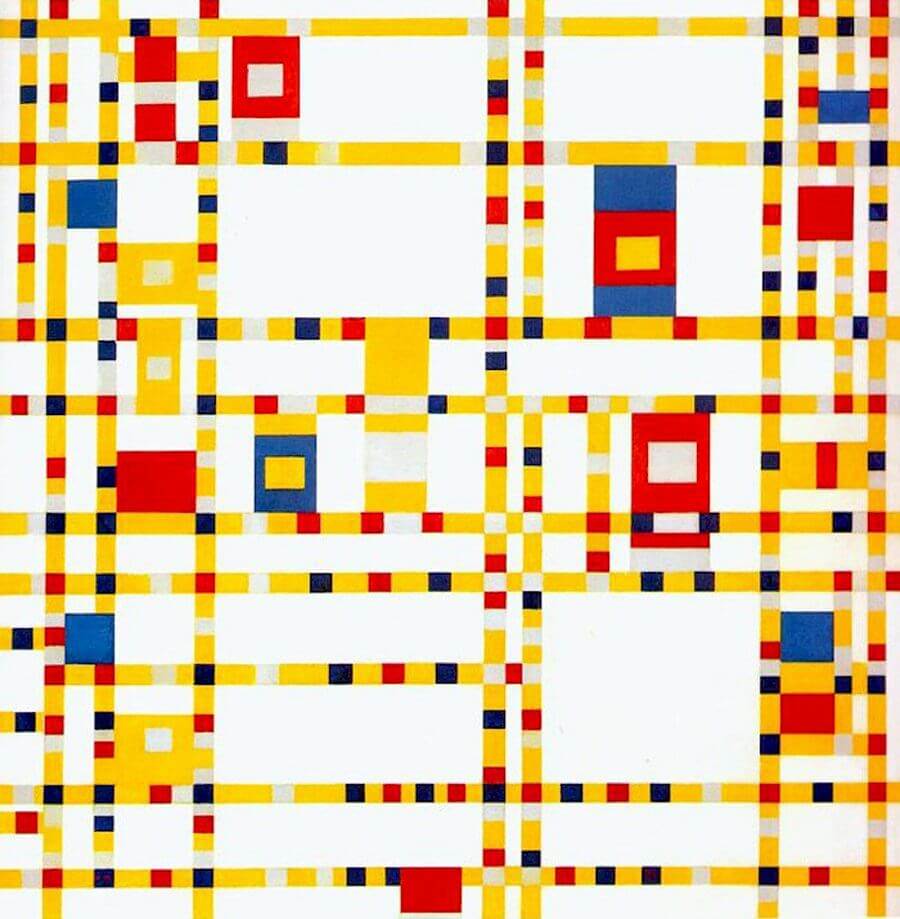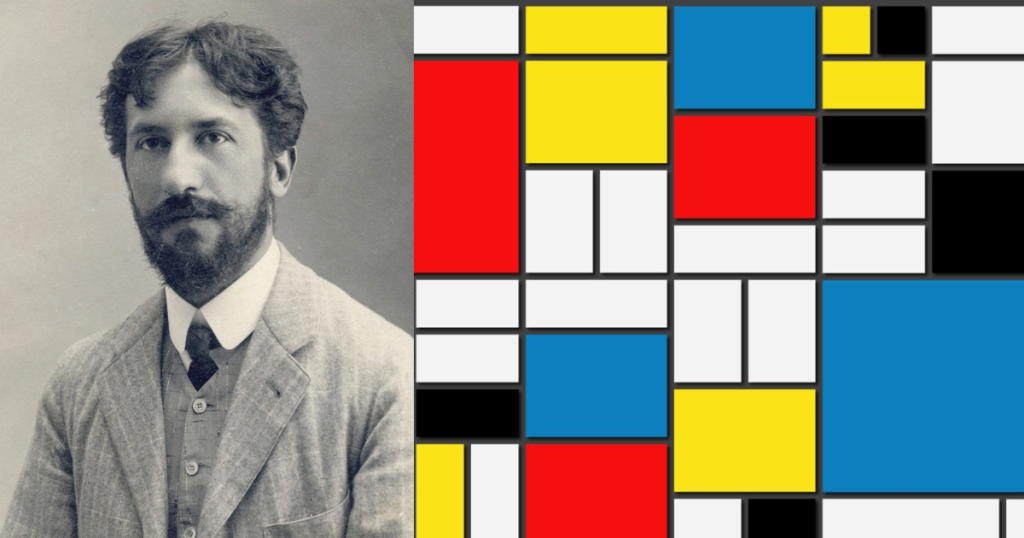March 7, ON THIS DAY
“In past times when one lived in contact with nature, abstraction was easy; it was done unconsciously. Now in our denaturalized age abstraction becomes an effort.”
– Piet Mondrian
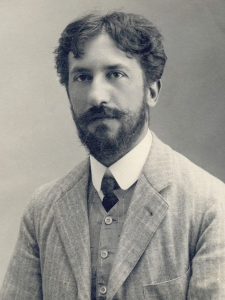
Courtesy: New Yorker
Abstract art has many manifestations to it that can be observed as one looks through the repertoire of 20th-century modernist artists. Still, there is none as striking as Piet Mondrian, whose drastic shift in style redirects the viewer to deconstructed forms of form and line. This Dutch artist has had such a significant influence on 20th-century European art styles, that he has often been compared to Pablo Picasso. He had always wished to mirror reality and wanted his art to be a reflection of what people can see, but he did not want to capture this in the traditional realist way. Instead, he wanted a return to the purest form of instinct, the simplest colors and forms. This would characterize Mondrian’s turn to “neoplasticism”, where primary colours and basic shapes would find dominance. He co-founded the De Stijil movement with other prominent Dutch artists and has influenced many contemporary artists, transforming their understanding of form and functionality in art.
Mondrian’s early landscapes
Though Mondrian is best known for his abstract neo-plastic work, he only developed his signature styles and concrete motifs later. His early artworks are rooted in realism and this has much to do with the strict and stable environment he grew up in. His father was an orthodox Protestant and Calvinist, and Mondrian would grow up with strict discipline and guidance. He received his formal training at Rijksadame van Beeldende in Amsterdam. His uncle, who was a big influence on young Piet, was a part of the Hauge school of landscapes. The Hague School was a group of Dutch artists who specialized in painting the Dutch landscape in a realistic style. Mondrian’s early work was greatly influenced by his uncle, who used to guide him as a young artist. The Academy he studied at discouraged landscapes, promoting still lifes and figure studies, but Mondrian continued to explore the landscape and kept ketching the countryside around Amsterdam. His works consisted of paintings characterized by their naturalistic style, with a focus on capturing the light and atmosphere of the Dutch countryside. His color palette was muted and subdued, reflecting the traditional Dutch aesthetic. Though Mondrian wanted to become a full-time professional artist, his family insisted on a more stable source of income, leading him to teach art and drawing in high schools.
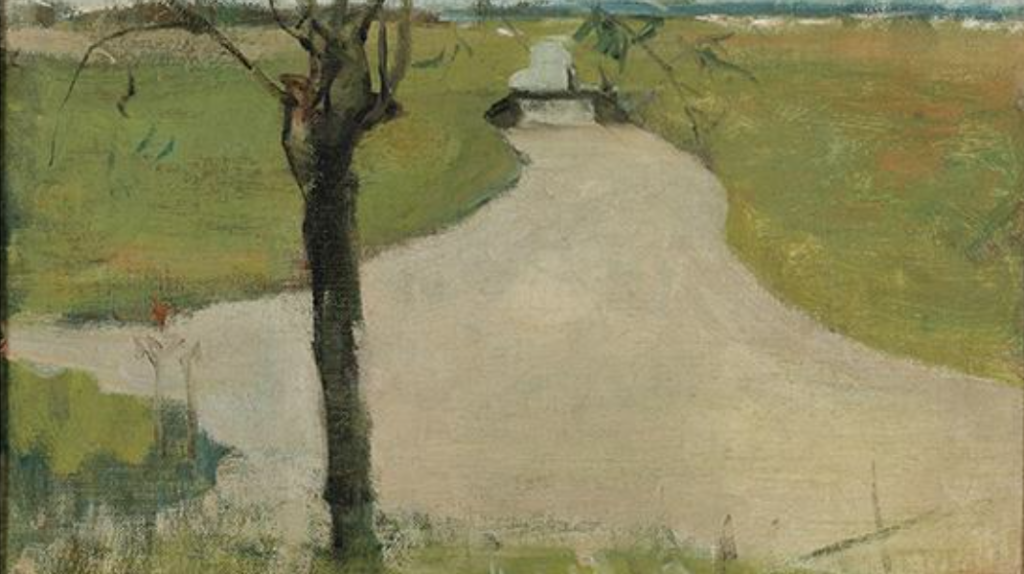
Courtesy: David Zwirner
However, even in his early works, there are hints of geometric abstraction that would come to define his later style. He had started experimenting with the way the traditional landscapes are structured, the way they divide their horizons to create points of interest in the nature scape. He used to experiment by drastically changing the compositions of the sceneries and altering the traditional compositional ratios of the sky to the ground. An example of this can be found in one of his early paintings titled “Ditch near Landzicht Farm” which boasts an impressive view below the horizon, but the sky has been reduced to barely one-tenth of the composition.
Horizontal and Vertical lines: Mondrian’s departure
The geometric patterns and divisions can characterize Mondrian’s later works and be easily noticed in the earlier after careful observation. Mondrian was fascinated by the underlying structure and order of the natural world, and he often used strong horizontal and vertical lines to create a sense of balance and harmony in his compositions. This can be observed in “Ditch near Landzicht Farm” itself, where the tree starkly divides the canvas into two distinct halves. serving as a solid black line.
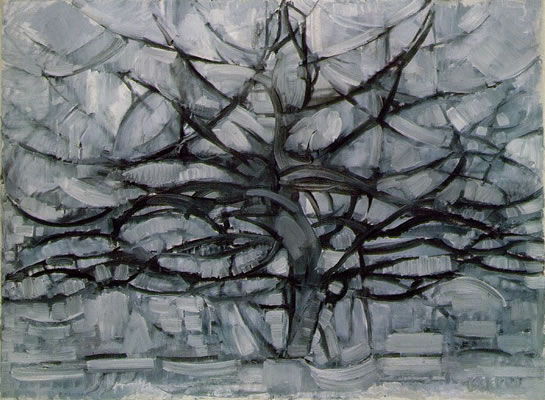
The time Mondrian was learning as an artist was also a time of rapid and unprecedented change in the art world. Traditional modes of art were being dismantled and new creative techniques and styles were being discovered and becoming trends. The Impressionist movement was in full swing, reinterpreting the use of color and strict outlines of a form in a painting. This allowed for experimentation and pushed Mondrian to think in the form of the basic true colours, to reduce the complicated with simple shapes, and to move out of the mindset that dictated that realistic form and composition is the only way to create landscapes. The artist had started to experiment with the basic forms of shapes and lines and was slowly moving away from the landscape. A good example of this transition is visible in the artwork The Grey Tree (1912), where he applies the principles of cubist composition to a natural subject, that is, the tree. Three variations of this same tree exist, giving the viewer a glimpse into the artist’s thought process as he changed his art style. Mondrian has this to say about his style:
“It is possible that, through horizontal and vertical lines constructed with awareness, but not with calculation, led by high intuition, and brought to harmony and rhythm, these basic forms of beauty, supplemented if necessary by other direct lines or curves, can become a work of art, as strong as it is true.”
– Piet Mondrian
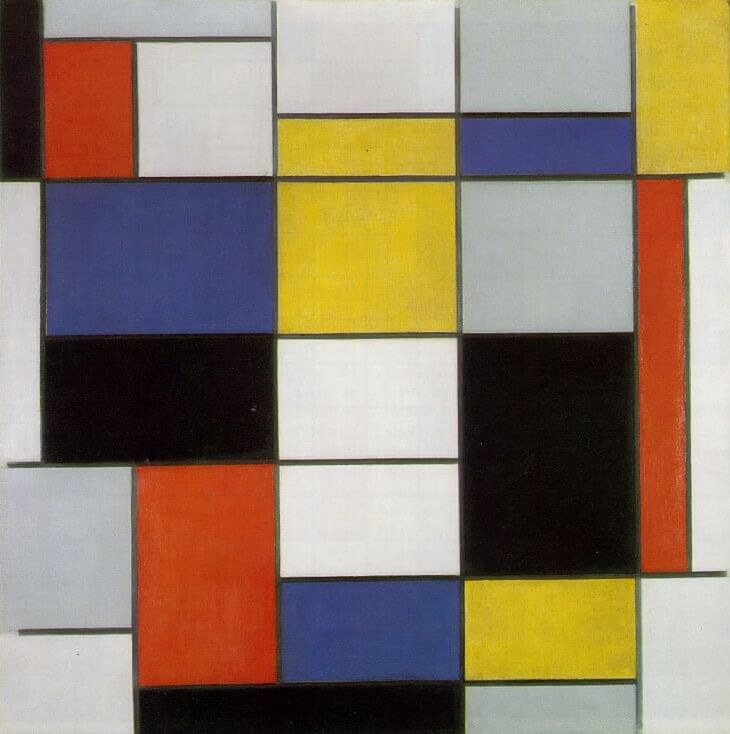
Courtesy: Piet-Mondrian.org
The abstract is the new universal language
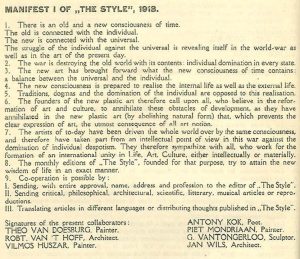
Courtesy: Wiki Commons
It would only be in the 1910s that Piet Mondrian would go on to develop his own signature style of neoplasticism. He was influenced by Cubist painters like Paul Cezanne, Georges Barque, and Pablo Picasso and as he settled in Paris, he gained exposure to a variety of art movements all over the world. His compositions radically transformed as a result. This new style was characterized by the use of simple geometric forms, such as squares and rectangles, and primary colors, such as red, blue, and yellow. He believed that these elements represented the basic building blocks of all visual language. He gave the name to his style in his 1917 essay titled “The New Plastic Painting”, which encouraged abstraction and believed that abstract art could create a sort-of universal pictorial language that went beyond written and spoken signifiers. This reflects the primary principle of De Stijil, where a restriction of pictorial motifs was encouraged. Abstractism, according to Mondrian, mirrors reality in a much more essential and truer form than the objects that imitate what the eye can see.
Mondrian’s work had a profound influence on the development of modern art and is celebrated for its purity, simplicity, and clarity. His writings on art and his paintings achieve an essential objective: how can one depict the deconstructed essences of reality that is removed from all that is natural?
